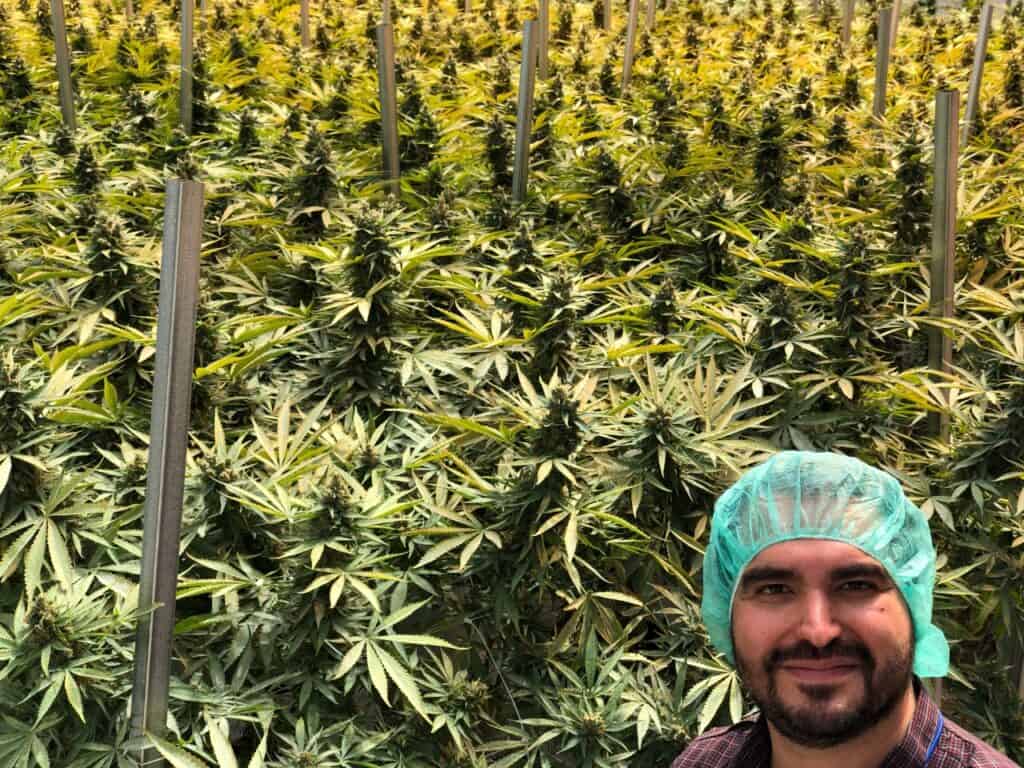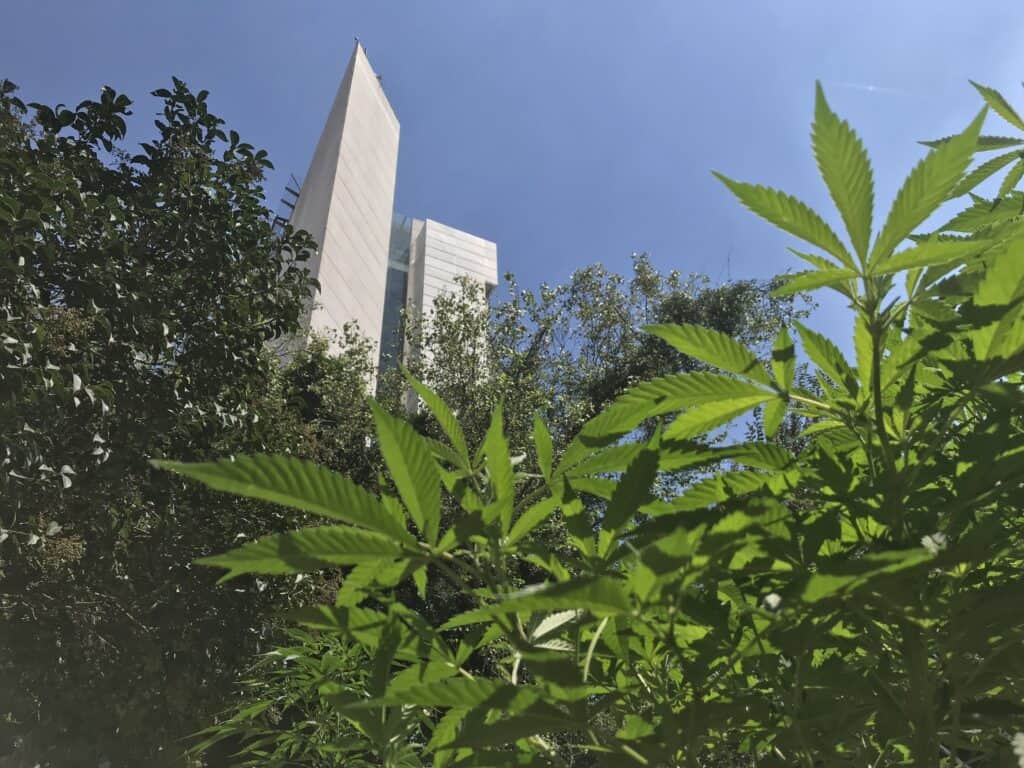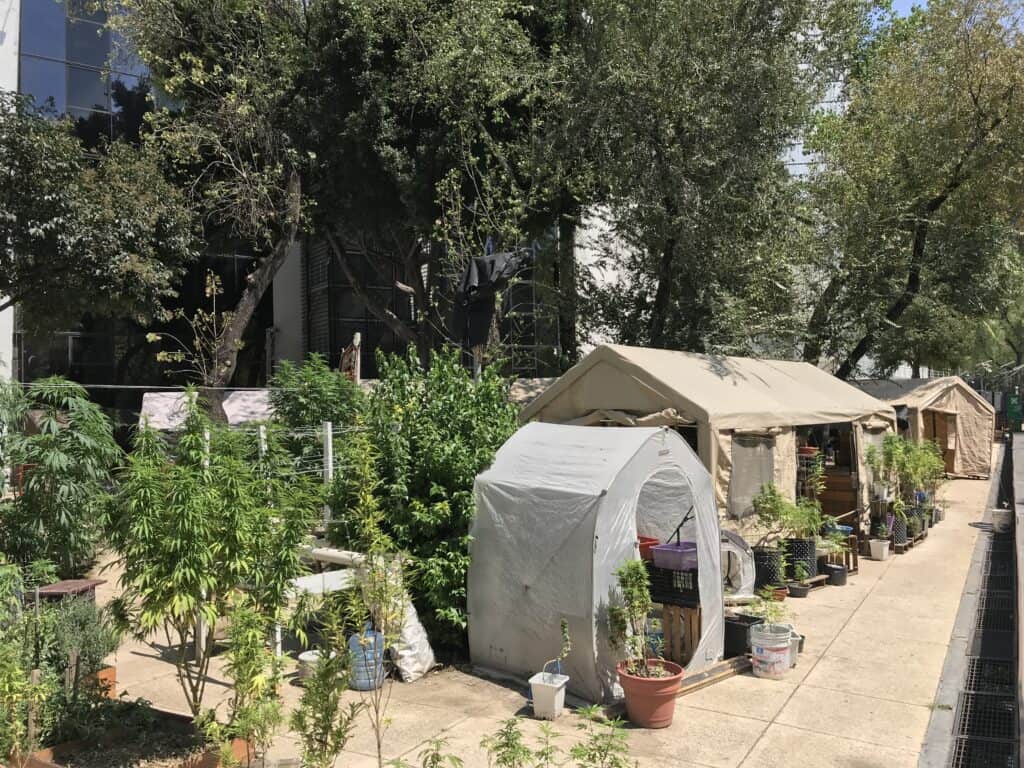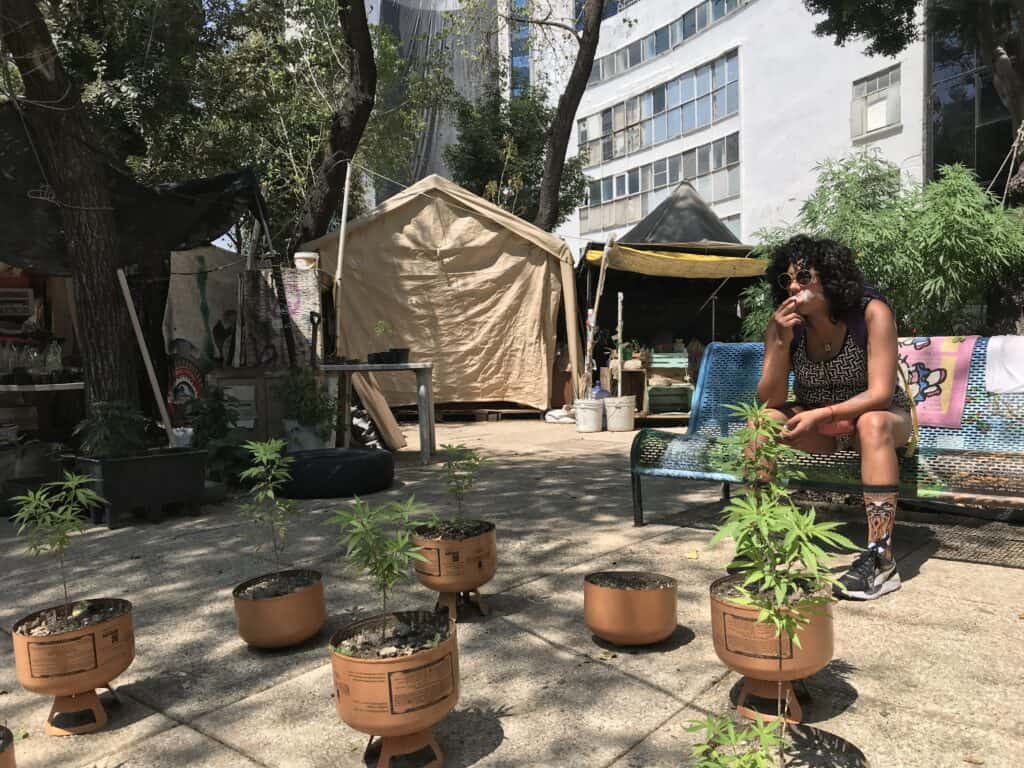As Mexico inches closer to passing a game-changing federal law that would legalize marijuana for recreational use, we reached out to several experts for their insight on what may become one of the world’s largest cannabis markets. Here’s the latest dope on the market’s promising future, including the exciting possibilities for weed tourism.
Will the long-delayed cannabis bill get passed this year?
It’s looking like a strong possibility after Mexico’s Senate Majority Leader Ricardo Monreal of the ruling Morena party recently announced that the upper house has prioritized the cannabis law and the goal is to pass legislation by year-end.
Grupo Promotor de la Industria de Cannabis (GPIC), an advocacy group representing 25 large cannabis companies such as Canopy Growth and PharmaCielo, shares the senator’s optimism.

Erick Ponce, Courtesy of ICAN
“I do believe that we will have a bill approved this year or by April,” said GPIC president Erick Ponce. “That being said, one thing is having the law approved and another thing is having the infrastructure and regulatory framework in place, and I believe that is going to take about another two years.”
If passed, the landmark bill would fully legalize cannabis for consumption and production, making Mexico just the third country, after Uruguay and Canada, to regulate adult use on a federal level.
Mexico’s lower house approved legislation in March and the Senate is currently reviewing revisions to the bill after the Supreme Court ruled that a ban on marijuana use is unconstitutional.
The final step would require President Andrés Manuel López Obrador, also of the Morena party, to sign the bill into law. The populist president has expressed concerns over marijuana legalization, saying it could potentially bring more drug-related violence and addiction to Mexico; however, he has hinted that he would support the bill if he believes it would “do no harm to the country.”
Green rush a la Mexicana
Though it’s difficult to put an exact number on how much Mexico’s cannabis industry would be worth, conservative estimates project that it could generate about $3 billion annually (Canada, in contrast, did about US $2.1 billion in recreational cannabis sales in 2020). According to GPIC, by 2025 sales from recreational and medical products could pull in as much as $7 billion a year, not to mention millions in tax revenues.
As things stand, more than 170 companies have applied for brand registration in Mexico, several dozen of which currently have licenses to sell either medical cannabis or CBD-based supplements. (Mexico legalized cannabis for medical purposes in 2018 but it’s been described as a somewhat complicated market with several legal hoops to jump through.)
Under the new law, licenses would be granted for cultivation, production, commercialization, research, and import and export operations, but it remains unclear if regulators (currently Cofepris and Senasica) would allow vertically integrated companies to hold multiple licenses, plus Congress may conceivably place limits on foreign investments. Nevertheless, industry insiders see a bright future for Mexico, particularly for manufacturing, cultivation, and exports.
“I believe Mexico is going to be a key player in manufacturing as we already manufacture a lot for the US and Canada because of the cheap cultivation and labor costs, and we have the infrastructure,” said GPIC’s Ponce, who is also head of a Massachusetts-based medical cannabis brand known as ICAN in Latin America.
Mexico’s consumer market is regarded as relatively small when compared to the US and Canada. However, most folks agree that a survey showing that just 2% of the Mexican population has consumed cannabis seems ridiculously low.

Zara Snapp, Courtesy of Brenda Hernandez
Zara Snapp, co-founder of the public policy think tank Instituto RIA, believes it’s going to be a much different market dynamic than that of the US.
“I don’t think we will move into the same products such as shatters, waxes, butters and the high THC products,” she said. “Instead, we are going to see balms, topicals, and all the things that señoras might want to try. It’s a market where we will have a lot more herbalism.”
Weed tourism boom
In 2018, when former Tourism Secretary Enrique de la Madrid (son of former Mexican President Miguel de la Madrid) floated the idea of legalizing recreational marijuana in top tourist destinations such as Cancun and Los Cabos, his progressive proposal raised eyebrows at the time, but it makes perfect sense now that Mexico is on the verge of passing the cannabis bill.

De la Madrid asserted that legalization would boost tourism and potentially reduce drug-related violence by normalizing the sale and distribution of marijuana products. In fact, numerous companies have already opened smoke shops and other cannabis culture spaces throughout the country with the hope that they will soon become dispensaries and consumption lounges.
Snapp, who also hosts the Mexican TV show Tiempo de Cannabis, points out that drug tourism essentially already exists in Mexico but it’s done around alcohol. Mexico’s lower legal drinking age is a big reason why so many young spring breakers are drawn to Cancun’s boozy beach fiestas each year, and it stands to reason that weed tourism could hold a similar allure.
“I think it could be a big deal and it’s something we need to be aware of within the regulatory models that are being proposed,” Snapp said. “In Mexico, you can drink at 18 because you are considered a legal adult, and the same would be true for cannabis.”
Should Mexico pursue weed tourism, which seems likely given the favorable economic outlook, one can easily imagine a whole new niche industry of weed-friendly hotels, cannabis tours, and gringo-friendly smoking lounges cropping up in tourist locations across the nation.
Safety concerns and the illegal market
Is Mexico safe to do business? It’s a legit question facing any company looking to set up shop in Mexico and the general consensus is that it depends on the region. The southern states of Chiapas and Oaxaca, for instance, are considered relatively safe entities thanks in part to collective community-based security efforts, whereas it may be a much different story in, say, the western state of Michoacan, where cartels are extorting avocado and lime farmers by demanding protection payments.
As drug-related violence continues to claim thousands of lives each year and leave thousands more displaced, legalization advocates are pressing for government incentives that would make it easier for illegal businesses to transition into the legal marketplace. Former Mexican President Vicente Fox, who now sits on the board of the Toronto-based medical cannabis company Khiron Life Sciences, is a vocal proponent of this.
But can it actually work? Vice Latin America editor Deborah Bonello believes some small producers might be interested in legitimizing their business operations, but not the cartels.
“I just can’t see the cartels transitioning like that,” she said. “I think the illegal market will continue to exist because it still has a lot of relevance for them, even if the marijuana trade is just a fraction of what they do.”
Indeed, in recent years the cartels have focused their efforts on more profitable drugs such as fentanyl, methamphetamines, and cocaine as the demand for marijuana grown in Mexico dwindles in the saturated US market.
Social justice focus and leveling the playing field
For nearly two years, a pro-cannabis sit-in demonstration known as Plantón 420 has occupied a small plaza just outside Mexico’s Senate building in the nation’s capital.
Surrounded by dozens of potted cannabis plants and enveloped in marijuana smoke, the encampment and the surrounding square have become a safe haven of sorts where people can smoke weed freely without fear of arrest.
The citizens’ movement has long been demanding provisions in the cannabis bill that would protect citizens against criminalization for personal consumption and home cultivation, both of which have been declared constitutional rights by Mexico’s Supreme Court.
Enrique Espinoza, one of the group’s coordinators, said lawmakers have visited the encampment just once but showed little interest in their cause.
“It seemed like more of a photo op for them,” he said. “As things are now, everything looks like it will benefit big business so we are out here looking out after the stoners’ interests.”
No matter where one’s interests lie, well-crafted cannabis policy could be truly transformative for Mexico but rule of law, or a lack thereof, and a credible social equity program will be key issues moving forward.
Snapp, a Harvard-educated public policy expert, favors a measure that would establish quotas requiring 40% of cultivation licenses to go to legacy communities. Not only would that allow small producers to get a solid foot in the market, but it could serve as a potential boon to local economies in marginalized areas.
“We are also in favor of restricting vertical integration for the first five years, meaning companies could only have one license whereas legacy communities could have multiple types of licenses,” she said.
Unfortunately, it would come as no surprise if some of these proposals get stripped from the latest draft or if the regulatory barriers for small producers are simply too difficult to overcome.
“It’s why we so often say that the state is the actor that we seek to change the most in the way they work with producers, whether small or large,” Snapp said.







